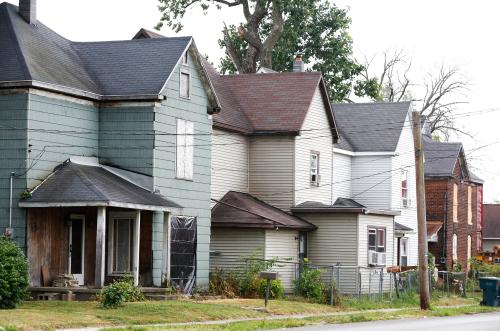As another tax filing season draws to a close, the looming tax reform effort promised by President Trump stands to spark yet another round of contentious debates on Capitol Hill. Given the stark and deepening partisan divides in Washington, it’s hard to believe that tax policies with bipartisan support exist.
However, the Earned Income Tax Credit (EITC) is a longstanding example of such a policy. Since its creation in 1975, both Republican and Democratic presidential administrations have expanded its reach. The EITC has garnered bipartisan support over the years because research shows it effectively encourages work, reduces poverty, and has long-lasting positive effects on outcomes for low- and moderate-income families and children.
The EITC Crosses Race and Education Lines
The EITC should still have bipartisan appeal today because it reaches across the demographic divides that characterized the 2016 election, particularly those of race and education. The Pew Research Center reports that 67 percent of white voters without a college degree backed Donald Trump, versus 28 percent who voted for Hillary Clinton, the largest advantage among any candidate since 1980. Clinton, meanwhile, captured large margins among black and Hispanic voters.
Our new analysis shows that the EITC benefits significant numbers of both these groups. According to our tax model estimates, the vast majority (86 percent) of EITC-eligible taxpayers do not have a bachelor’s degree, and just over half have no more than a high school diploma (see Figure 1). In addition, about half of all EITC-eligible taxpayers are white. Furthermore, white taxpayers who do not have a college degree—the so-called white working class—make up fully 40 percent of all taxpayers eligible for the EITC.
At the same time, the EITC benefits the black and Latino working class, who combined also account for 40 percent of all taxpayers eligible for the credit. The most common occupations for EITC-eligible working-class taxpayers include traditional blue-collar jobs in transportation and material moving and construction and extraction, as well as service-sector jobs in industries like retail, accommodation and food service, and health care.

The EITC Reaches Urban and Rural Communities
Geography marked another key divide in the 2016 election. As our colleague Chad Shearer has pointed out, Clinton captured large majorities in cities and big metropolitan areas, while Trump racked up outsized margins in small metropolitan and rural communities. These results by geography overlay with the demographic patterns described above, since working-class white Americans live disproportionately in smaller communities.
Here, too, the EITC crosses apparent partisan lines. Some of the highest rates of EITC eligibility are in economically struggling rural communities, including in states like Ohio and Pennsylvania that, as Tom Edsall reports, still haven’t recovered from the Great Recession. One in four white working-class taxpayers who are eligible for the EITC live in counties outside of the 100 largest metropolitan statistical areas, and one in six live in non-metropolitan counties (see Figure 2). In fact, in most states, the majority of EITC-eligible filers in rural areas are white working class residents. For example, in Vice President Mike Pence’s home state of Indiana, 55 percent of rural taxpayers eligible for the EITC in 2015 were white workers with a high school diploma or less.

Even in big metropolitan centers, which tend to be more demographically diverse, white working-class households represent a substantial portion of the EITC-eligible population. In 37 of the nation’s largest metro areas, white taxpayers without a bachelor’s degree make up a majority of all EITC-eligible filers. For example, this group accounted for almost two-thirds of EITC-eligible households in the Scranton metro area, a place that was pivotal in President Trump’s election.
This is all to say that the EITC is a critical piece of the nation’s safety net, and one that is already reaching many of the workers and communities struggling with the kinds of economic uncertainty and vulnerability that have attracted national attention in the wake of the election.
The EITC Could Do More for Working-Class Taxpayers
For all its positive effects, both Republicans and Democrats have recognized that the credit could work better for the working class. Currently, “childless workers”—noncustodial parents and workers without qualifying children—qualify for only a very modest credit. If the EITC for those filers were expanded per recommendations put forward in the past by Speaker Paul Ryan and President Obama, we estimate more than 15 million workers would have benefited in 2015, just under half of whom were part of the white working class.
Policymakers could also provide EITC-eligible households with more financial stability by creating a periodic payment option to deliver the credit throughout the year, not just at tax time. Recent interviews with white working-class voters in Ohio illustrate the intense financial pressures that they and their families face. For many struggling to live paycheck to paycheck, the EITC represents a chance to catch up on rent and unpaid bills. A model recently piloted in Chicago demonstrates that periodic payment options can help recipients smooth their income over the year, better weather unanticipated expenses—like a car breaking down—and avoid resorting to high-cost credit options like payday loans. Adopting a similar advanced payment option nationally, or a deferred savings mechanism, could help promote economic security year round.
Measures like these can help strengthen a tax policy that already does so much to improve outcomes for low-income workers and their families across the country, and should be priorities for the Trump administration and congressional leaders if tax reform efforts move ahead as promised. Not only would improving the EITC do more to help the struggling working class, but also it may be one of the few areas in the current political climate that could offer Washington a bipartisan success story.







Commentary
The Earned Income Tax Credit and the white working class
April 18, 2017